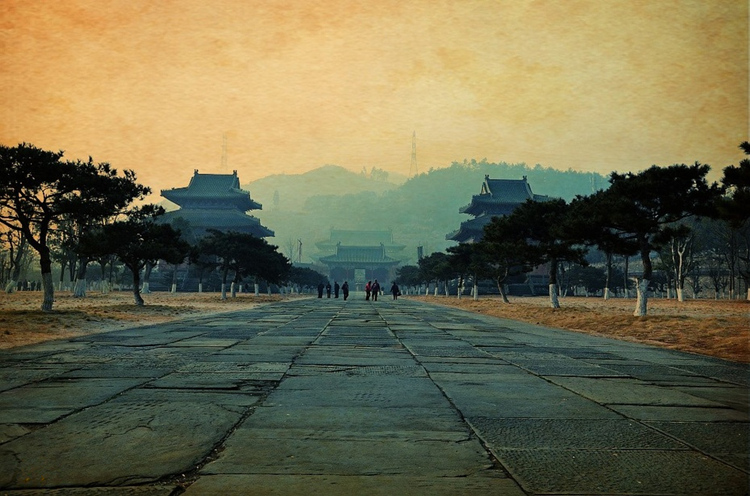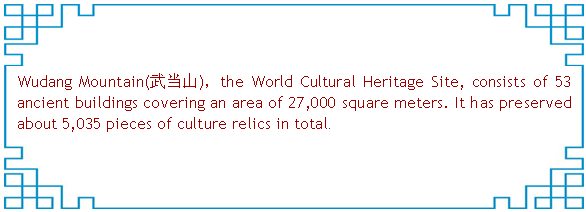|
|
 Author: Fan Chen |
Situated in Shiyan city of northwestern part of Hubei province, Wudang Mountain is renowned as China's Taoist holy mountain and was listed by UNESCO as a World Cultural Heritage Site in 1994.
Wudang Mountain (武当山) consists of 53 ancient buildings covering an area of 27,000 square meters. It has preserved about 5,035 pieces of culture relics in total.
The ancient building complexes in Wudang Mountain were first built in the years of Zhen Guan period (627-649) of Tang Dynasty, and reached its peak in the Ming Dynasty. Emperors from all ages constructed and renovated it over and over again as royal temples.
It was during the reign of Yong Le period (1403-1424) in the Ming dynasty that the Palace Museum in the north and Wudang Mountain in the south were built at the same time. Emperor Zhu di of the Ming Dynasty spent millions and employed 300,000 people per day to build 33 units of architectural complexes including nine halls, eight temples, 36 nunneries, 72 rock temples, 39 bridges and 12 pavilions. During the Jiaqing period (1796-1820) of the Qing Dynasty, they were renovated and expanded again.
|
 Buildings alongside the stone path in Yu Xu Palace, dubbed as the Forbidden City in the south. |











